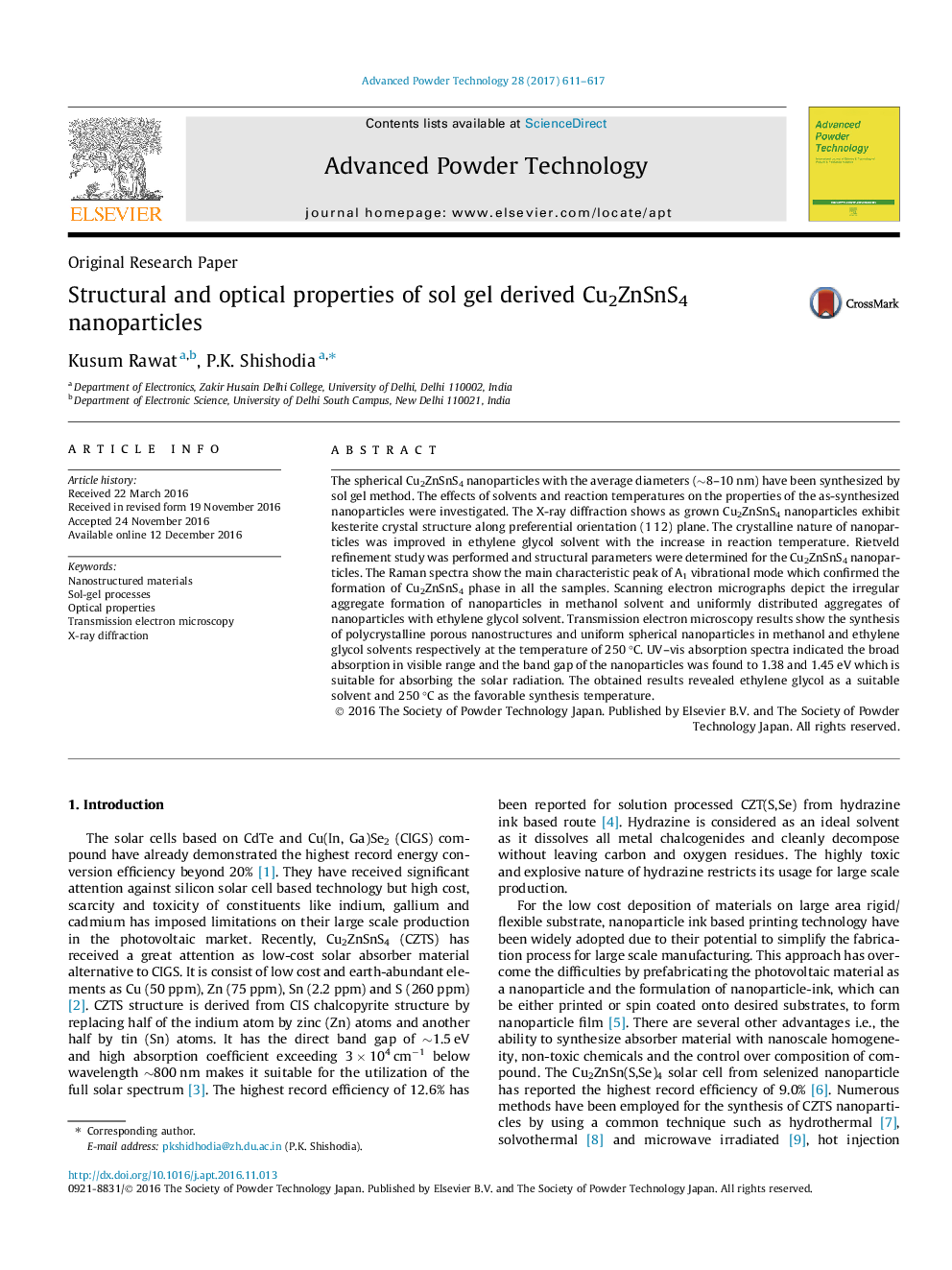| کد مقاله | کد نشریه | سال انتشار | مقاله انگلیسی | نسخه تمام متن |
|---|---|---|---|---|
| 6464669 | 1362207 | 2017 | 7 صفحه PDF | دانلود رایگان |

- CZTS nanoparticles were prepared by inexpensive sol gel method.
- The effects of solvent and temperature on the growth of nanoparticles were studied.
- Uniform spherical nanoparticles â¼8-10Â nm were obtained in ethylene glycol solvent.
- The band gap of the nanoparticles was found to be â¼1.38-1.45Â eV.
The spherical Cu2ZnSnS4 nanoparticles with the average diameters (â¼8-10 nm) have been synthesized by sol gel method. The effects of solvents and reaction temperatures on the properties of the as-synthesized nanoparticles were investigated. The X-ray diffraction shows as grown Cu2ZnSnS4 nanoparticles exhibit kesterite crystal structure along preferential orientation (1 1 2) plane. The crystalline nature of nanoparticles was improved in ethylene glycol solvent with the increase in reaction temperature. Rietveld refinement study was performed and structural parameters were determined for the Cu2ZnSnS4 nanoparticles. The Raman spectra show the main characteristic peak of A1 vibrational mode which confirmed the formation of Cu2ZnSnS4 phase in all the samples. Scanning electron micrographs depict the irregular aggregate formation of nanoparticles in methanol solvent and uniformly distributed aggregates of nanoparticles with ethylene glycol solvent. Transmission electron microscopy results show the synthesis of polycrystalline porous nanostructures and uniform spherical nanoparticles in methanol and ethylene glycol solvents respectively at the temperature of 250 °C. UV-vis absorption spectra indicated the broad absorption in visible range and the band gap of the nanoparticles was found to 1.38 and 1.45 eV which is suitable for absorbing the solar radiation. The obtained results revealed ethylene glycol as a suitable solvent and 250 °C as the favorable synthesis temperature.
149
Journal: Advanced Powder Technology - Volume 28, Issue 2, February 2017, Pages 611-617